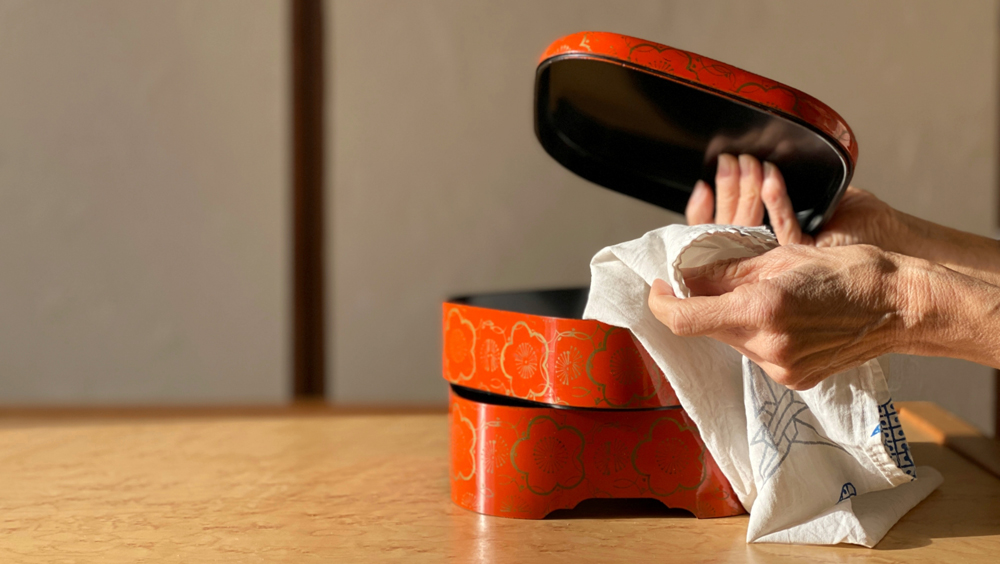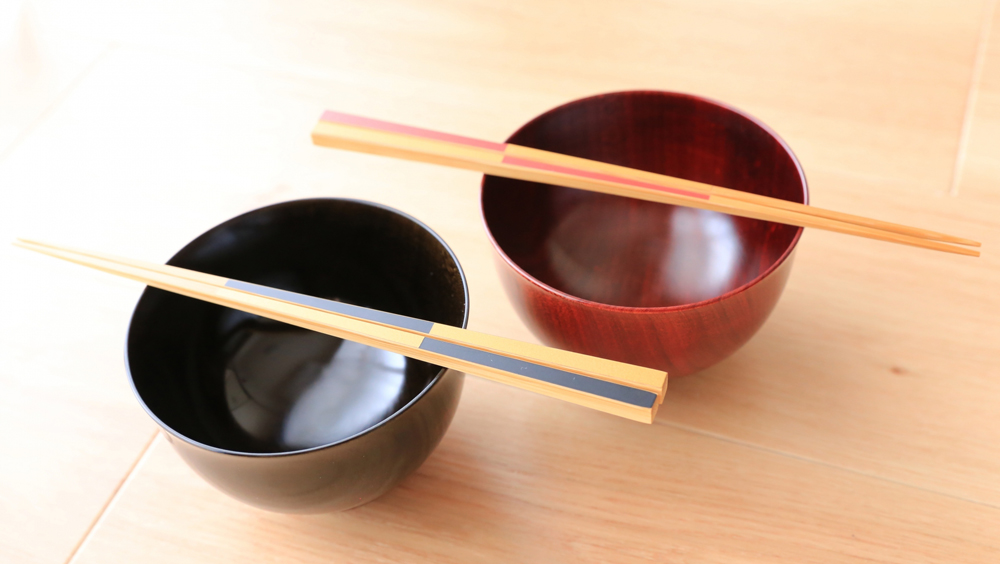Lacquerware is often thought to be difficult to care for, but this is not the case. Its unique characteristics include sensitivity to extreme dryness, humidity, and sudden temperature changes, as well as the softness of wood as its primary material. With proper care and attention to these factors, lacquerware can develop a beautiful sheen over time, becoming more charming with use. Below, we introduce the proper care methods for lacquerware. By understanding these care techniques, you can enjoy your lacquerware for many years.
Table of Contents
・Precautions When Using Lacquerware
・How to Wash and Wipe Lacquerware
・Storage Methods for Lacquerware
・Lacquerware Usage FAQs
・Additional Notes
Precautions When Using Lacquerware

Use as Intended
Improper use of the product can lead to damage or injury. Always use lacquerware according to its intended purpose.
Avoid High Heat
Do not place lacquerware directly on open flames, in the microwave, or in the oven.
Hot Foods and Drinks
It is safe to use lacquerware for hot items, such as soups and drinks. However, avoid placing items that are boiling hot into it, as this may cause discoloration of the lacquer coating, which cannot be restored. To prevent sudden temperature changes, you can rinse the lacquerware with lukewarm water before use.
Damaged Lacquerware
If your lacquerware develops cracks or breaks, consider replacing it promptly. Depending on the damage, it might be possible to repair or recoat the lacquer, so consult our store or a lacquerware specialist.
Refrigeration
While lacquerware can be used at low temperatures, storing it in the refrigerator for extended periods may cause cracks due to dryness.
Prolonged Exposure to Water
Avoid leaving lacquerware submerged in water or storing items containing liquids for extended periods.
Use with Vinegar and Oil
Lacquer is inherently resistant to acids and oils, so it is fine to use lacquerware for vinegar-based dishes or oily foods. However, it is not recommended for long-term storage of such items.
How to Wash and Wipe Lacquerware
Washing
Use a mild kitchen detergent and a soft sponge. Avoid soaking the item in water for long periods.
Separate Washing
Since lacquerware is softer than ceramics, wash it separately to avoid scratches.
Drying
Rather than air drying, it is better to wipe the lacquerware with a cloth to prolong its life.
Special Care for Decorated Pieces
For items with intricate designs, such as maki-e, wash gently with a soft cloth like gauze and dry with a soft towel.
Dishwasher Use
Avoid using dishwashers and dryers, as strong detergents and high heat can damage the lacquer.
Storage Methods for Lacquerware
Shield from Sunlight
Store lacquerware in a cupboard away from direct sunlight, as UV rays can harm the lacquer finish.
Prevent Scratches
If stacking lacquerware, place a soft cloth or paper between each piece.
Avoid Dryness
Lacquerware dislikes extreme dryness. For long-term storage, place a small cup of water in the cupboard to maintain humidity.
Using lacquerware regularly in daily life is the best way to preserve it, as frequent use prevents dryness and allows the piece to "breathe." Nested designs, like stacking bowls, are also great for space-saving storage.
Lacquerware Usage FAQs
Can Lacquerware Be Used in the Microwave?
No, lacquerware is not microwave-safe. While industrial lacquerware made with special resins may be microwave-compatible, they lack the traditional feel and quality.
Can Lacquerware Be Refrigerated?
It is fine to refrigerate lacquerware briefly. However, prolonged refrigeration may cause cracking due to the dryness inside the fridge.
Is It Safe to Use for Vinegar or Oily Foods?
Yes, lacquer is resistant to acids and oils. However, avoid placing hot, oily foods directly into the lacquerware, as the heat may cause discoloration.
Can Lacquerware Hold Soups?
Yes, lacquerware can hold soups or other liquids, even hot ones, as long as they are not boiling. To protect the lacquer, pre-rinse with warm water before use to prevent sudden temperature changes.
Additional Notes
About Lacquer Allergies
Some people may experience allergic reactions to lacquer, especially when the piece is newly crafted. If you notice any irritation, discontinue use and consult a specialist.
About Lacquer Odor
Lacquerware may have a noticeable smell upon purchase due to being stored in an enclosed box. To reduce the odor, wash the item with lukewarm water and place it in a well-ventilated, shaded area. With regular use, the smell will naturally fade over time.
Embrace lacquerware in your daily life without fear-it becomes more beautiful and meaningful the more it is used.

